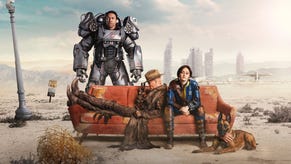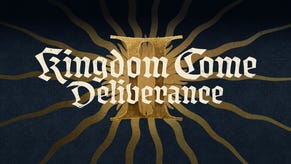Uncharted 3: Lemarchand, North go deep on storytelling
Naughty Dog's Richard Lemarchand and Nolan North speak to Johnny Cullen about the Uncharted 3's creative process, story, mo-cap and much more.
I'm never a conversationalist in interviews. No matter how hard I try, I'm always focused on the information I'm after - which feels robotic and also probably prevents me from thinking of followup questions - not a chat, although I'd like to think I am getting better at that particular skill.
But last week, for at least 20 minutes at Eurogamer Expo, I was able to have a conversation, not an interview with Nolan North, Mr Nathan Drake himself, and Naughty Dog's lead game designer Richard Lemarchand. Even with the background noise and PA announcements blaring off in the background, it still felt like anything but work, as you'll see below.
As anyone who attended the pair's developer's session last week will know, it's almost unbelievable how much collaboration there is between North and Naughty Dog, but also how much the former knows of development in games. I think it's safe to say you're dealing with a committed Nolan North, no matter the job.
VG247: You mentioned yesterday in the session you had a very big collaboration between you and the studio. Infamously, you're doing other games like Assassin's Creed, Dark Void, etc. You do most of these games for days at a time, whereas with Uncharted, it's about 14 months you said?
Nolan North: It can be up to that, up to 14-16 months just because around the time... [speaking to Richard] you guys would go into development, it's about a two year process, right?
Richard Lemarchand: Yeah, yeah.
NN: And this is actually good information from me too. When did we start casting from the end of [Uncharted] 2?
RL: I think it was about six months after the beginning of development in the game.
NN: So about six months in. I have about 16, sometimes 18 months, but it varies. It would have gotten more so on the third one, even more involved, because there was more cut-scenes and more time.
RL: And just more stuff to do because the games have got a bit bigger each time and more intensive. And of course, Nolan was involved in the creation of the multiplayer part of the game as well as the single-player.
"So that six months really gives us the breathing space to have a good long think about all the things we want to put in the next game and start to make some choices, and as Amy says, stick some pins into the idea of what it could be."
NN: We did the motion capture for all of that stuff and it was great fun. But also the rehearsal timing, It's one of the few games that would take time to have a full day of rehearsal, well not a full day, a full session, four hours. Like, say, mind the one session in the morning, we'll show up, usually have a nice breakfast and a little chat. By 10AM, we roll onto set and we sit around a table with Amy Hennig, our writer and creative director, and Gordon Hunt, our director, sometimes Josh [Scherr, cinematic director]...
RL: Gordon Hunt is our director of motion capture. Something that I think not enough studios do is to work with a director of acting basically, someone who had been working with actors all their life.
NN: Especially someone who's done stage, because [Hunt's] done stage and television. The motion capture, performance capture is a lot like theatre.
RL: So that six months really gives us the breathing space to have a good long think about all the things we want to put into the next game and start to make some choices, and as Amy says, stick some pins into the ideas that we think we wanna keep. And from there, we can start production.
NN: And unlike starting out on a big, full 120-page script like a phonebook, there's just a few select scenes to get us going. And then, that collaboration process comes in. We're able to do those scenes, see where it goes, and then she'll write for the next section and the next point, the next point, the next point and where she wants to go. She's very open to change in direction, but still keeping the through-line to where she wants to end up. Brilliant. It's very difficult to do, but she's one of the few who can make it work.
Yeah, definitely. A master of her work.
NN: She is absolutely the top of the game. She's amazing.
RL: Yeah, absolutely. One of a kind.
But that's just one collaboration between you and Naughty Dog. But there's also another collaboration between you, Naughty Dog and Bend with Uncharted: Golden Abyss for Vita. How is that going?
NN: We do the same process of motion capture, but with a different director, Kris Zimmerman [Ed note: Kris directed a lot of the voicework on the main Metal Gear Solid series - JC] who's on that one, who's a fantastic director. There was a lot of pointers throughout, I know John Garvin [writer and game director of Golden Abyss] consulted with Amy Hennig quite a bit because she birthed the character.
So he would talk to her to get some insight on the character and he was very keen to ask me, 'Is that something he would say that? How do you feel about that? Would Drake do that?' And he was pretty spot on with his writing and how he wanted to get it done. And as you know, the hardware is different, so it has to stay true to the characters in the story. I think Rich can talk about that a little more because the mechanics of a handheld are different.
RL: Right, for sure, especially a handheld with all the new capabilities of Vita with game design considerations. But we've been very lucky that Sony Bend have run with that. I think Amy gave them what we call a big brain dump at the beginning of project. We talked them through not just the evolution of the world of Uncharted, but also the creative process that we use for working with the actors and developing the performances and implementing them into the game. But from that point on, the guys were really off and running. We're very excited to see what they come back with.
Nolan, you seem to have a lot more detailed knowledge of Vita than probably most voice actors.
NN: I take a pretty keen interest in development now. As we've talked about yesterday, I am writing the book, Drake's Journal: Inside the Making of Uncharted 3, and it's really my perspective. As you know, I do a lot of games, but this one's very near and dear to my heart. And the people at Naughty Dog are near and dear to my heart. And I wanted to show them something that highlighted what they do and how we do it together. In terms of Golden Abyss and how I came in, as I'm writing this book, we started doing that. So I understand how they're working and how a development office works and what they're looking to do. So I'm a fan of the process of making the game.
RL: What you have to understand is that Nolan actually has a curious inquisitive nature and I think this is a huge part of why we gave him the role of Nathan Drake because Amy and Gordon and the other people involved could see that, fundamentally, he's the same kind of guy as Nathan Drake; he loves to find out what's going on. He's fascinated by the world around him and by history.
NN: And quite frankly, how can you not? I mean, you get to know these guys and you learn that... Like the scenes we've been showing like the plane sequence, I got to learn there must be over a dozen people that put in hundreds of hours just to do their one little bit and then to make a whole. The logistics of all those people doing their jobs that well to make it all come together and work it out, I can't even begin to tell you. I went to college and I still don't understand fully how they do it, but I know how to write it down and hopefully help people gain an insight into how hard they work.
RL: And we're very excited about Nolan's book. It's really flattering to us that he'd want to write a whole book about our process because we're all interested in the way games get made. Constantly refining our own processors, constantly trying to learn new things. It's like being in college working at Naughty Dog.
NN: But it's also not just about learning how you do it, it's about the fun that they have while they're making it. And sometimes, [talking to Richard] as you put it, when we go mental.
RL: [laughs]
NN: A lot of people going mental because...
RL: They're staying up late, polishing the game.
NN: And losing their minds.
RL: Yes.
Tell me about your experiences in other games. Obviously, Uncharted is the big banana. It's not just "a job," it's something you collaborate on. You could basically say, let's take this for example: Kiefer Sutherland on 24. He started out on the show as an actor before moving onto a producer. That's what I'd basically compare your collaboration with Uncharted.
NN: I wouldn't put myself as a producer.
Oh no, no. I mean the same caliber of collaboration.
NN: Yeah, I see what you mean. Just the fact that actually going from the point of just being cast, and we all kinda learned on Drake's Fortune how things were working. And then, as their technology advanced in development, they added things. And as an actor, I remember for Uncharted 2: Among Thieves being asked to come in for all the casting sessions, not just to read out with this possible character, but actually have my input be valued as something like, 'do you think this is somebody we should hire,' which was a daunting task. And we did the same thing for 3 to a certain extent where I had even more say on the casting.
But it's something that every actor should have a chance to do because you realise that the people who come in - and every actor should know - even if you don't get a job, it doesn't mean you weren't good. It just means you weren't 'the right fit' for that particular project. There were people who didn't get a job on 2 that ended up getting a job on 3 because we remember them from that one.
RL: Yeah.
NN: I know Amy and I have a couple of names that we've kept in the back of our heads that if we are lucky to do an Uncharted 4, it's somebody we'd like to work with in the future. So for me, just the fact that they include me in any role other than just the guy who comes in to do Nathan Drake is very flattering and humbling.
RL: And that kind of inclusive, collaborative style is really just a reflection of the way we work at the studio as well.
NN: Yeah, Naughty Dog as a developer is a collaborative unit. It's unbelievable. Christophe Balestra and Evan Wells [co-presidents] are there just as much if not more than anyone else.
RL: And they've done an amazing job of fostering the kind of company culture that's not about departments or many layers of bosses. It's about a bunch of talented, creative people who are under the same roof who love games, who have some experience making games, and who are good at brainstorming and coming out with some crazy idea, like the idea that Drake gets sucked out of the nose of a breaking apart cargo plane. And then to have the kind of temerity to chase the idea down, see it through, to actually make it work, with the tools that we use to make the game - which very often involves people from widely different disciplines, maybe a programmer, an animator, a visual effects person...
NN: Working together.
RL: Working together, yeah. Not because anyone's told them to, but they see what they need to do to get the thing finished. So they run across the office, tap someone on the shoulder and say, 'hey, I need your help with this thing.' So it's very kind of open, and like Nolan says, inclusive in that kind of way. And that extends to the actors. We'd be fools if we didn't take advantage of the opportunity together.
Let's talk about mo-cap. That's something that's pivotal to Uncharted. And, by the looks of things, it's going to be part of the games you make in the future at Naughty Dog, not just with Uncharted, but with maybe potential Jak and Daxter titles and any other games you do in the future. I'm not asking are you doing another Jak and Daxter, it was just an example.
RL: Yeah, I mean motion capture is something that we hadn't used until we made Uncharted: Drake's Fortune, and it was really a step into a brave new world for us. Nolan's really travelled with us on that whole adventure because we had a lot to learn about how to do it. Other game studios were using mo-cap, movies had been using mo-cap for quite some time. But we decided to go back to basics and figure out what would work out for us.
NN: It's interesting how it's evolved. One of the first scenes we ever mo-capped for Uncharted: Drake's Fortune was the part where Elena and Nate had to jump out of the plane at the beginning and parachute out. They actually, on the stage, carpenters built the framework of part of a fuselage, and the steering column was PVC piping. But there was a little cutout and we had to kind of climb through it. And if we did that today, it'd be nothing more than some chairs and boxes. And we wouldn't even need that stuff.
And actually, some of the plane was much more inclusive to hide some of the markers on the [mo-cap] suit. Another example is Eddie Raja when they drive off the jeep in Drake's Fortune. They actually rented a jeep - this is in the book too - that actually had ... mouse crap through out it. [all laugh] And it stank like urine and it had little mouse faeces.
We had to jump into it - I remember banging my knee, it was a big metal old Toyota jeep - and then what we realised was you don't need that. And by the time we got to Uncharted 2, it was a couple of benches, a fake steering column, the shift was a PVC pipe with a tennis ball.
And by the time we got to Uncharted 3, it was just chairs because the animators knew we just need to do this and they actually had the model and it just became paired down to the essentials. It makes it a little more difficult as an actor because you have less to work with, but at the same time, it's also a little more freeing because you don't have to worry about banging your leg, which as long as you picture that jeep and just jump in there because in first instance, lets say the animators decide, 'oh it should be a truck, not a jeep,' they can just go 'okay,' change it and make the skin whatever they want it to be.
RL: That's a great evolution of our process. Very interesting.
NN: And much less expensive than renting a jeep for the day.
I want to touch upon something you made comment on yesterday. You said doing mo-cap like the MotionScan tech in LA Noire would be "difficult". Does that show how much of a free-form performance you could do with Uncharted and Naughty Dog compared to something like MotionScan and LA Noire?
NN: Richard can touch upon the technology of facial capture, but I know a couple of the actors who did the facial capture. And it's very difficult that you have to be animated. If you just watch us talking, anybody, we move our heads, I might do this and I might do that. They can not do that. And what happens when you have to keep your face that still, you're going to one of two ways: you'll be so afraid to actually emote and move your face and so it'll be very boring or you'll try to overdo it. And now, all of a sudden, you're going, [he says with an expressionless face] 'hey, listen to me, you know whats going to happen when we go down that street.'
So if you're locked in that position, what's the point? The point is when you're locked in that position, you're not being natural. And good acting is being natural. With Uncharted, one of the things that is vital to the performances is the fact they had people who do the facial animation that they will sit there and watch reference videos. So we're in our suits doing all these things and the movements can be very free, can get as close as we want to another actor and talking, fighting, getting in their face, whatever and not worrying about the markers on my face in case they fall off, are they capturing it?
"There's some great, subtle facial moments in Uncharted 3 unlike any of the other previous games that I've seen, like Drake and Elena at the gate. Watch the facial and know that we gave those performances."
And then, what they do, they'll just take a normal performance, but just have videotaping cameras that'll go back and the animators can watch my face do a little crinkle or that I might do something subtle. And subtly is the key, and they can just hand animate the facial animation. I think it's a true testament for this game that people love Drake's personality. And there's some great, subtle facial moments in Uncharted 3 unlike any of the other previous games that I've seen, like Drake and Elena at the gate. There's other moments I can't give away, but watch the facial and know that we gave those performances, and that was great.
But people who do the facial animation, they had to translate that so you could see it. And they credit me to say, 'but you guys gave that performance so we could animate it.' 'But you had to animate it.' So it's a real marriage, it's that collaboration I keep going back to. So without them, it doesn't matter how good my performance was.
RL: And I think that's the main point of this discussion about performances, what kind of technology you use to capture and then reproduce the performances in the game. Yet we're lucky we live in the time where we have this amazing choice of tools, these different techniques for capturing performances being developed.
And I think, as with anything, it's about finding the right tool for the particular job you want to do. The way Nolan's described, where we do full body motion-capture and animate their faces, is what we decided to be the best way for us in making Uncharted, but that doesn't mean that these other ways of doing it don't have their own excellent uses. I'm just delighted to be alive in 2011 and these things exists. All these amazing games are coming out.
Final question. You touched upon the scene with Drake and Elena at the gate from gamescom. Afterwards, there was some speculation that Elena was pregnant. Either that or the end of Uncharted 2. What can you say about that?
RL: Wow, what can we say about rumours of pregnant Elena?
NN: You know what would be great? I should just set the record straight. At the beginning of Uncharted 2, Nathan Drake is at the bar drinking because he's just come from his vasectomy. [Everyone laughs]
So if Elena's pregnant, my guess is it's Sully's. [All laugh] That's all I can say. That one's a spoiler.
Uncharted 3: Drake's Deception launches on November 1 in the US and November 2 in the UK for PS3.




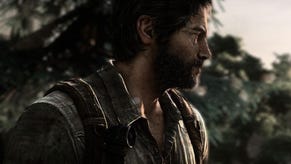
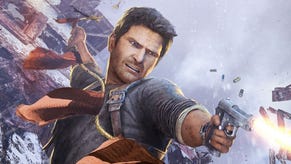
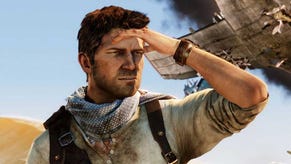
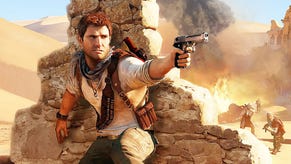

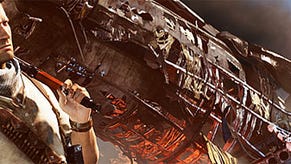
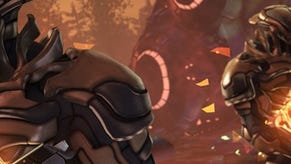
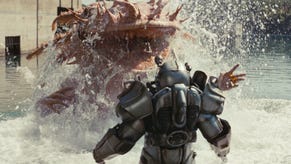



.jpg?width=291&height=164&fit=crop&quality=80&format=jpg&auto=webp)
